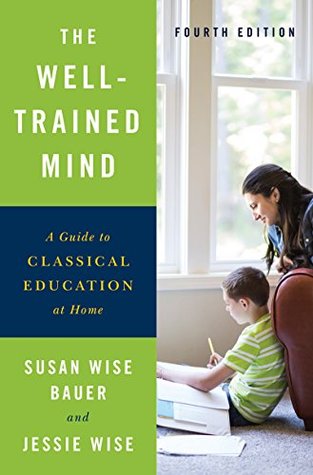More on this book
Community
Kindle Notes & Highlights
The Well-Trained Mind is a parent’s guide to a do-it-yourself, academically rigorous, comprehensive education—a classical education.
The Well-Trained Mind is a handbook on how to prepare your child to read, write, calculate, think, and understand.
Part I tells you how to lay the foundations of academic excellence, from kindergarten through fourth grade.
Each section includes a grade-by-grade summary so that you can see at a glance what each school year should include.
The freedom to tailor an academic program to your child’s particular interests and needs, strengths and struggles, is one of home education’s greatest advantages.
The freedom to tailor an academic program to your child’s particular interests and needs, strengths and struggles, is one of home education’s greatest advantages.
you should always feel free to substitute, to pick and choose and adapt.
you should always feel free to substitute, to pick and choose and adapt.
classical education strives for mastery in the skill areas, but discovery and exploration in the content areas.
Skill areas are those parts of the curriculum that give the student tools for learning: grammar, phonics and spelling, the mechanics of sentence and paragraph construction, mathematical operations (from addition to complex equations), basic concepts in science.
Content areas are literature, history, the sciences, mathematical thinking and understanding, written composition, art, music—fields of study that are open-ended and that can’t be “mastered.”
The student who is working on ancient history will read Greek and Roman mythology, the tales of the Iliad and Odyssey, early medieval writings, Chinese and Japanese fairy tales, and (for the older student) the classical texts of Plato, Herodotus, Virgil, Aristotle.
She’ll read Beowulf, Dante, Chaucer, Shakespeare the following year, when she’s studying medieval and early Renaissance history.
When the eighteenth and nineteenth centuries are studied, she starts with Swift (Gulliver’s Tra...
This highlight has been truncated due to consecutive passage length restrictions.
she reads modern literature as she is studying...
This highlight has been truncated due to consecutive passage length restrictions.
The classical pattern lends coherence to the study of history, science, and literature—
Classical education is, above all, systematic—in direct contrast to the scattered, unorganized nature of so much secondary education.
A classical education requires a student to collect, understand, memorize, and categorize information.
There’s nothing wrong with self-expression, but when self-expression pushes the accumulation of knowledge offstage, something’s out of balance.
Seize this early excitement. Let the child delve deep. Let him read, read, read. Don’t force him to stop and reflect on it yet.
The immature mind is more suited to absorption than argument.
In the early grades, you’ll be telling your child stories, reading to him from history and science books, teaching him math facts.
Don’t make K–4 students dig for information.
Fill their minds and imaginations with images and concepts, pictures and stories. Spread knowledge out in front of them, and let them feast.
protect her love of learning.
Children who cry, sulk, or grow angry when faced with schoolwork are probably being asked to work at a developmental level that they haven’t reached.
Give your children the time and space to mature, in each subject area, from grammar into logic-stage thinking.
Part of the school dilemma results from an over-focus on testing results; home educators are free from that pressure, so you won’t have to decide between test prep and expository writing.
In the elementary grades, we suggest that you prioritize reading, writing, grammar, and math.
Don’t feel that you must teach every subject in depth. Remember, classical education teaches a child how to learn. The child who knows how to learn will grow into a well-rounded—and well-equipped—adult . . . even if he didn’t finish his first-grade science book.
SUBJECT: Preparation for reading, writing, and math, birth–age 5 TIME REQUIRED: Start with 10 minutes a day for each subject, gradually increasing to about 30 minutes a day by age 5
Start with five minutes of drill and five minutes of reading in an easy book every day. Work up to fifteen minutes of each.
Sorting through charts and songs and trying to follow a program with lots of aids make teaching more complicated than it needs to be.
Bob Books series,
Bob Books, Set 1: Beginning Readers.
Bob Books, Set 2: Advancing Beginners.
Bob Books, Set 3: Word Families.
Bob Books, Set 4: Complex Words.
Bob Books, Set 5: Long Vowels.
Bob Books: Rhyming Words.
Bob Books: Sight Words, Kindergarten.
Are You My Mother?
The Best Nest.
Go, Dog, Go.
The Cat in the Hat.
Dr. Seuss’s A.B.C.


